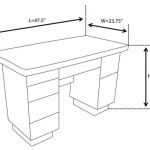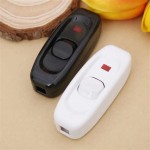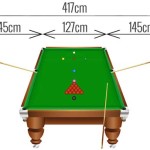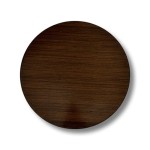```html
Pool Table Air Hockey: A Hybrid Gaming Experience
The concept of combining pool tables and air hockey into a single gaming unit presents an intriguing proposition. While not a standard offering, the idea of a dual-purpose table that can transition between the strategic depth of pool and the fast-paced action of air hockey has garnered interest from recreational gamers and those seeking space-saving solutions.
Specifically, the conversation around "Pool Table Air Hockey" usually revolves around two primary configurations: modifications to existing pool tables to enable air hockey functionality and the development of dedicated hybrid tables designed to accommodate both games. Each approach presents unique engineering and design challenges, impacting overall gameplay and user experience.
Understanding the potential benefits and limitations of such a hybrid gaming solution necessitates examining the technical considerations, design options, and practical implications for both pool and air hockey enthusiasts. This analysis requires a comprehensive exploration of factors such as airflow systems, playing surface materials, and conversion mechanisms.
The feasibility of successfully integrating these two distinct games into a single platform depends on addressing fundamental physical and mechanical aspects. Air hockey requires a smooth, level surface with consistent airflow, while pool necessitates a felt-covered surface with precise leveling and solid support. Reconciling these disparate requirements is the central challenge in creating a viable pool table air hockey hybrid.
Addressing Airflow and Surface Compatibility
The core of air hockey lies in the consistent and uniform distribution of air across the playing surface. This airflow creates a cushion of air beneath the puck, allowing it to glide freely with minimal friction. Achieving this on a surface primarily designed for pool, typically covered in felt, poses a significant hurdle.
One approach involves employing a removable, perforated overlay. This overlay, made of a hard, smooth material like acrylic or high-density polyethylene, would create the desired air hockey surface. A built-in or external air pump would then force air through the perforations, generating the necessary cushion. The challenge here lies in ensuring the overlay is perfectly level and securely attached to the underlying pool table to prevent movement or uneven airflow.
Another potential solution involves embedding an airflow system directly within the pool table’s framework. This would require careful engineering to integrate air ducts and perforations without compromising the structural integrity of the table or interfering with the pool playing surface. Furthermore, a mechanism would be needed to switch the airflow on and off, allowing seamless transition between the two games.
The type of air pump used is also critical. It must be powerful enough to generate sufficient airflow across the entire playing surface, yet quiet enough not to detract from the gaming experience. Noise reduction technologies, such as dampening materials and optimized fan designs, would be essential.
Maintaining a clean surface is vital for optimal air hockey performance. Dust and debris can clog the perforations and reduce airflow effectiveness. A regular cleaning routine, potentially including a built-in cleaning system, would be necessary to ensure consistent gameplay.
Conversion Mechanisms and Structural Considerations
A crucial aspect of a successful pool table air hockey hybrid is the ease and speed of conversion between the two games. A cumbersome or time-consuming conversion process could deter users from utilizing both functionalities, negating the purpose of the hybrid design.
Ideally, the conversion process should be simple and require minimal physical effort. This could involve a system of levers, hinges, or motorized mechanisms to raise or lower the air hockey overlay. The overlay should be lightweight yet durable, allowing for easy handling and storage when not in use.
The underlying pool table’s construction must be robust enough to support the added weight and stress of the air hockey components. The frame, legs, and playing surface support structure must be reinforced to prevent warping or sagging over time. This is particularly important for tables that will be frequently converted between the two games.
The design must also account for the storage of pool cues, balls, and other accessories when the table is configured for air hockey, and vice versa. Integrated storage compartments or easily accessible shelving units would be ideal solutions.
Furthermore, the table’s overall aesthetics should be considered. The design should seamlessly integrate the air hockey components without compromising the traditional appearance of a pool table. This requires careful attention to material selection, color schemes, and overall proportions.
Impact on Gameplay and User Experience
The ultimate measure of a pool table air hockey hybrid’s success is its ability to provide a satisfying gameplay experience for both pool and air hockey. The design must not compromise the core mechanics or enjoyment of either game.
For pool, the felt surface must remain perfectly level and provide consistent ball roll. The pockets must be properly sized and positioned to meet standard pool table specifications. The addition of air hockey components should not interfere with the player’s stance or stroke.
For air hockey, the airflow must be uniform and consistent across the entire playing surface. The puck should glide smoothly and predictably. The rails must be sturdy and provide accurate rebounds. The scoring system should be clear and easy to use.
The smoothness of the transition between games is also critical. A seamless conversion process enhances the user experience and encourages frequent use of both functionalities. A clunky or time-consuming conversion process can lead to frustration and disuse.
The long-term durability and maintenance requirements of the hybrid table are also important factors. The design must be resilient to withstand regular use and exposure to environmental factors. The air hockey components must be easily serviceable and replaceable.
The sound levels generated by the air pump and puck impacts also play a crucial role in user experience. Excessive noise can be distracting and detract from the enjoyment of the game. Careful attention to noise reduction techniques is essential.
The integration of smart technology, such as electronic scoring systems, programmable lighting, and mobile app connectivity, could further enhance the user experience. These features can add convenience, customization, and social connectivity to the gaming experience.
```
7ft 3 In 1 Revolver Pool Air Hockey Table Tennis

Signature Redford 3 In 1 Pool Table Free Delivery

Flippable Air Hockey To Billiards Table

Fat Cat Pockey Table Air Hockey And Pool Combo

Multifunctional Rotating Pool Air Hockey Table Tennis

Fat Cat 3 In 1 Game Table Air Hockey Pool Ping Pong

Fat Cat Pockey 3n1 Combination Air Hockey Pool Table

Multi Game Table Motion Xt 2 In 1 Air Hockey Pool

Triumph 3 In 1 Multigame Air Hockey Billiards Pool And Table Tennis Com

Convertible Air Hockey Pool Billiards Dinner Table Tennis








